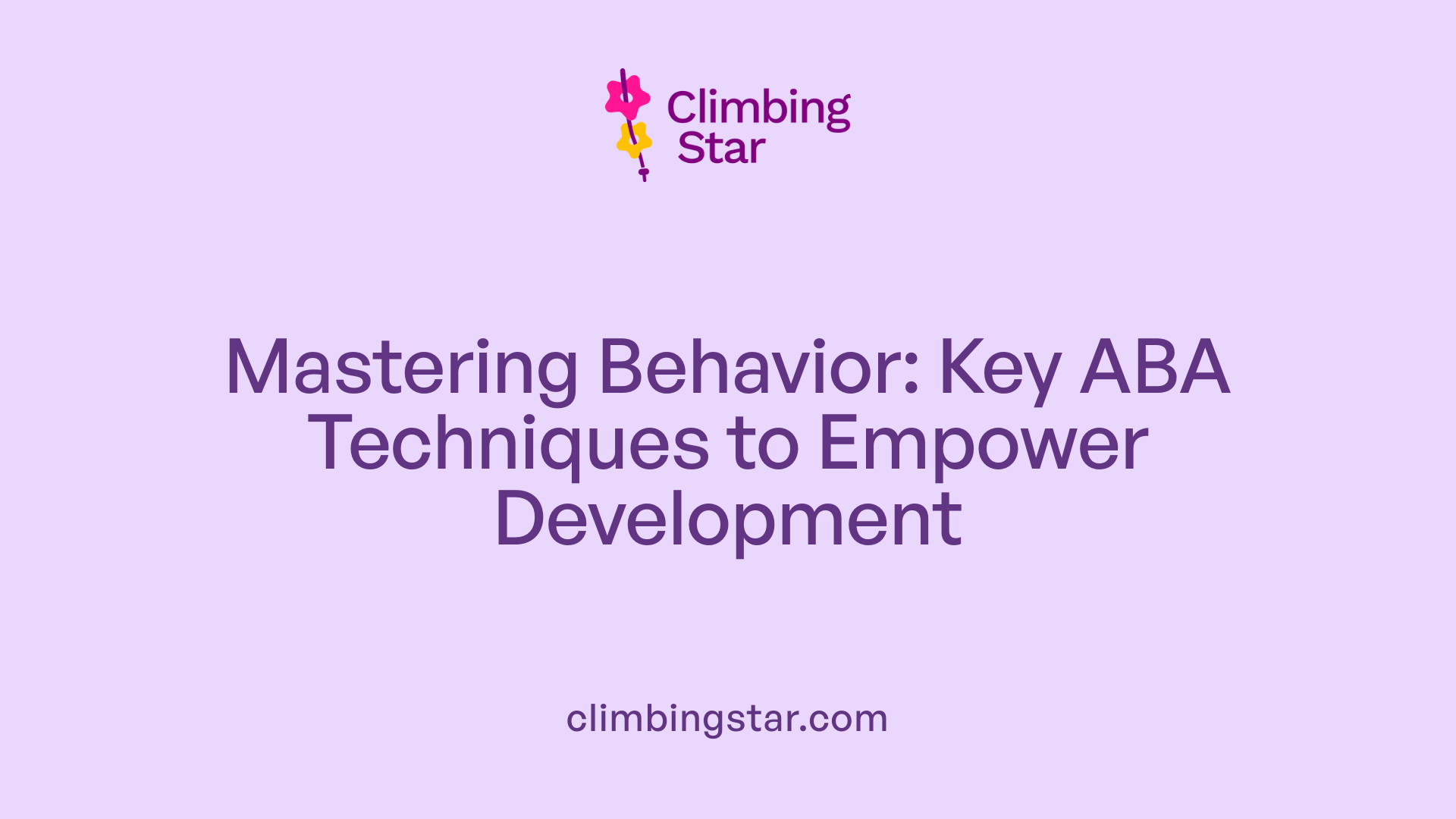Unveiling the Autism Creature
The enigmatic 'autism creature' is often misunderstood, viewed through the lens of behavior that challenges conventional interaction and communication. Through the lens of Applied Behavior Analysis (ABA) and multidisciplinary therapeutic approaches, we unravel the complexities of autism spectrum disorder (ASD), exploring how tailored interventions help individuals navigate and thrive within their environments. This article explores the science, practice, and evolving perspectives of autism therapy, emphasizing compassion, efficacy, and person-centered care.
Defining Applied Behavior Analysis: The Foundation of Autism Therapy
What is Applied Behavior Analysis (ABA) therapy?
Applied Behavior Analysis (ABA) therapy is a scientifically based approach rooted in understanding and modifying behavior. Its main goal is to improve specific skills like communication, social interactions, academic abilities, and self-care, especially in individuals with autism spectrum disorder (ASD).
Scientific Basis and Core Principles
ABA relies on principles of respondent and operant conditioning, focusing on how the environment affects behavior. Through careful assessment of antecedents, behaviors, and consequences (the A-B-C framework), ABA therapists use reinforcement strategies to promote desired behaviors while reducing maladaptive ones. Techniques common in ABA include Discrete Trial Training (DTT), Pivotal Response Treatment (PRT), task analysis, chaining, prompting, and shaping.
The foundational 1968 study by Baer, Wolf, and Risley outlined ABA’s seven defining characteristics: it is applied, behavioral, analytic, technological, conceptually systematic, effective, and promotes generalization of learned skills.
Individualized Treatment Plans
ABA therapy is highly personalized. A multidisciplinary team—including behaviorists, neurologists, therapists, and medical professionals—develops treatment plans tailored to each individual's unique needs. Functional Behavior Assessments (FBAs) help identify the purpose of specific behaviors, enabling clinicians to develop socially acceptable alternative responses through differential reinforcement.
Role of Qualified Behavior Analysts
In North America, ABA is delivered mainly by behavior technicians supervised by Board Certified Behavior Analysts (BCBAs). These professionals design, monitor, and adapt therapy based on continuous data collection. Certification through recognized programs ensures that behavior analysts have the expertise to provide effective treatment.
Early intervention with ABA has been shown to significantly improve outcomes. For many children, early intensive therapy can lead to remarkable developmental progress, sometimes even eliminating their autism diagnosis, as demonstrated in pioneering work by Ivar Lovaas and others.
ABA remains the most established and evidence-supported behavioral therapy for autism, with strong research backing its effectiveness in fostering meaningful and lasting behavioral change.
How ABA Supports Individuals with Autism: Enhancing Life Skills and Independence
How does ABA therapy support individuals with autism?
ABA therapy offers personalized and evidence-based strategies specifically designed to meet the unique needs of each individual with autism. Through a detailed understanding of behavior in relation to the environment, ABA employs reinforcement techniques to teach new skills and improve existing ones. This tailored approach enables meaningful enhancements in communication, social interactions, and daily living skills.
Personalized strategies
Each ABA program is developed based on individual assessments, including Functional Behavior Assessments (FBAs), to understand the reasons behind certain behaviors. Techniques such as Discrete Trial Training (DTT) and Pivotal Response Treatment (PRT) allow therapists to focus on pivotal areas influencing multiple behaviors, fostering long-term benefits. Differential reinforcement is used to encourage socially acceptable alternatives to challenging behaviors.
Communication enhancement
ABA therapy addresses communication challenges by teaching functional communication skills. Functional Communication Training and verbal learning techniques help individuals express needs and emotions effectively, reducing frustration and improving interactions with others.
Improving social interaction
Social skills training is an integral part of ABA, focusing on fostering appropriate social behaviors through modeling, prompting, and reinforcement. This helps individuals build better relationships and navigate social settings more confidently.
Behavior reduction
ABA focuses on reducing maladaptive behaviors by analyzing antecedents and consequences, then strategically modifying the environment to promote positive behaviors. Token economies and incidental teaching are used to motivate and reinforce desired behavior changes.
Settings for therapy delivery
ABA therapy is versatile and delivered in various settings such as homes, schools, and clinical environments. Behavior technicians often provide one-on-one sessions under supervision by Board Certified Behavior Analysts (BCBAs), ensuring interventions are consistent and effective.
Early and intensive intervention benefits
Research shows that early, intensive ABA intervention leads to significant developmental gains, including improved language, social communication, and self-care skills. Early start programs increase the likelihood of better long-term outcomes, highlighting the importance of prompt and consistent therapy.
ABA ultimately supports individuals with autism by empowering them with skills that enhance their independence and quality of life, all within a structure that adapts to their evolving needs.
Who Provides ABA Therapy? The Specialists Behind the Scenes

Who typically provides ABA therapy services?
ABA therapy is delivered by a team of trained professionals specializing in behavior analysis. The cornerstone of this team is the Board Certified Behavior Analyst (BCBA). BCBAs are responsible for designing and overseeing tailored treatment programs based on thorough behavioral assessments. They ensure that interventions are effective and customized to each individual's needs.
Roles of behavior analysts and BCBAs
Behavior analysts, particularly BCBAs, supervise therapy delivery and conduct ongoing evaluations such as Functional Behavior Assessments (FBAs). They train and guide other staff members in implementing evidence-based strategies like Discrete Trial Training (DTT) and Pivotal Response Treatment (PRT).
Role of Registered Behavior Technicians (RBTs)
Registered Behavior Technicians (RBTs) are paraprofessionals who work directly with clients, often providing one-on-one support under the supervision of BCBAs. RBTs carry out daily therapy sessions, applying specific interventions devised by their supervisors to help develop socially meaningful skills.
Settings and delivery methods
ABA therapy is flexible and can be delivered across various settings such as homes, schools, clinics, or community environments. This versatility allows the therapy to integrate with the individual's everyday life, promoting generalization of learned behaviors.
Interdisciplinary care teams
Often, ABA therapists collaborate within multidisciplinary care teams that include neurologists, occupational therapists, speech therapists, and medical professionals. Such collaboration ensures a comprehensive approach, addressing the diverse needs of individuals on the autism spectrum.
Supervision and assessment duties
Supervision is a vital part of ABA therapy. BCBAs regularly assess treatment progress using tools like the Autism Treatment Evaluation Checklist (ATEC) and adjust programs accordingly. They maintain the fidelity of interventions and provide ongoing training to the therapy team.
Together, these specialists form a cohesive unit dedicated to delivering effective, individualized ABA therapy that promotes meaningful behavioral improvements.
Core ABA Techniques: Tools to Shape Behavior and Skills

What techniques are commonly used in ABA therapy?
ABA therapy employs a variety of techniques to support skill development and behavior improvement in individuals with autism. One foundational method is positive reinforcement, which involves rewarding desirable behaviors to encourage their repetition. This approach helps increase the likelihood of beneficial behaviors by providing motivating incentives.
Another widely used strategy is prompting and fading. Therapists begin by providing cues or assistance to guide new behaviors and then gradually reduce this support, promoting the individual's independence and mastery of skills.
Discrete Trial Training (DTT) is a highly structured technique that breaks down skills into small, teachable components. Each trial has a clear beginning and end, with immediate reinforcement following correct responses, accelerating learning through repetition and consistency.
In contrast, Natural Environment Teaching (NET) utilizes everyday situations and settings to teach functional and socially meaningful skills, encouraging generalization beyond the therapy session. This method often involves modeling, where therapists demonstrate behaviors for the individual to imitate naturally.
More complex behaviors can be taught through behavior chaining, which decomposes multi-step tasks into individual links, training each step sequentially until the entire behavior is mastered. Additionally, behavior contracts set explicit agreements with clear expectations and consequences, fostering accountability and self-management.
A crucial aspect of ABA is the Functional Behavior Assessment (FBA). This assessment helps identify the reasons behind challenging behaviors, allowing therapists to design targeted interventions that replace maladaptive behaviors with socially acceptable alternatives.
Together, these techniques form an integrated toolkit tailored to each individual’s needs, helping to enhance communication, social skills, and adaptive behaviors effectively.
Historical Foundations and Scientific Validation of ABA

Who was Ivar Lovaas and what did the UCLA Young Autism Project contribute?
Ivar Lovaas is a pioneering figure in Applied Behavior Analysis (ABA). He established the UCLA Young Autism Project, where he introduced Discrete Trial Training (DTT), a structured ABA technique focused on teaching skills through repeated trials. His groundbreaking work proved the efficacy of ABA, especially in early autism interventions.
What were the early research breakthroughs in ABA therapy?
Early research by Lovaas demonstrated that intensive early ABA therapy could lead to significant improvements in children with autism, including some children eventually losing their autism diagnosis. This showed the transformative potential of behavioral therapy when applied early and systematically.
How did Discrete Trial Training originate?
Discrete Trial Training (DTT) was developed during Lovaas's time at UCLA as a cornerstone ABA technique. It breaks down skills into small, teachable components presented in structured, repeatable trials, allowing precise measurement and reinforcement of desired behaviors.
What are the seven characteristics of ABA identified by Baer, Wolf, and Risley?
In 1968, Baer, Wolf, and Risley described seven defining features of ABA:
- Applied: Focused on socially significant behaviors
- Behavioral: Observable and measurable behaviors
- Analytic: Demonstrating experimental control
- Technological: Detailed and replicable procedures
- Conceptually Systematic: Based on behavior principles
- Effective: Producing noticeable change
- Generalization: Promoting behaviors beyond training settings
How is ABA characterized in terms of scientific rigor and technology?
ABA therapy is deeply rooted in scientific methods, relying on respondent and operant conditioning. It uses systematic environmental assessment and modification to influence behavior. The technological aspect means that each intervention is carefully documented, allowing consistent replication and reliable outcomes.
ABA's solid scientific foundations and historical breakthroughs by Lovaas and others continue to guide the development and effectiveness of autism therapies worldwide.
Multidisciplinary Approaches and Complementary Therapies for Autism
What therapies complement ABA in autism treatment?
Applied Behavior Analysis (ABA) is often integrated with various other therapies to address the diverse needs of individuals on the autism spectrum. Speech therapy focuses on improving communication skills, enabling individuals to better express themselves and understand others. Sensory integration therapy targets sensory processing challenges, helping individuals better respond to environmental stimuli.
Occupational and physical therapies support the development of daily living skills and motor coordination, enhancing independence and physical functioning. These therapies work together with ABA to provide a holistic approach aimed at improving overall quality of life.
How do music and art therapy assist with emotional regulation?
Evidence-based sensorimotor therapies such as music and art therapy play an important role in emotional expression and anxiety management for individuals with autism. These approaches allow for nonverbal communication and provide creative outlets that help reduce stress and promote emotional well-being.
What is animal-assisted therapy and how does it help?
Animal-assisted therapy involves guided interactions with animals like dogs, horses, and dolphins. These therapies have been found to reduce fear and anxiety, promoting calmness and social engagement. For many, the presence of animals provides comfort and encourages positive behavioral changes.
How are personalized treatment plans developed?
A multidisciplinary care team typically oversees the creation of individualized treatment plans. This team often includes behaviorists, neurologists, speech therapists, occupational and physical therapists, and medical professionals. Through collaboration, they tailor interventions based on the unique needs and developmental progress of the individual.
Why is a team-based approach important in autism care?
The complexity of autism requires multiple therapeutic perspectives to effectively target behavioral, communication, sensory, motor, and emotional challenges. Team-based care ensures comprehensive support that adjusts as the individual grows, facilitating better long-term outcomes.
Early Intervention and Progress Monitoring in Autism Therapy

Why is early intensive therapy important in autism treatment?
Early intensive therapy is crucial for children with autism as it significantly improves long-term outcomes. The foundation of interventions like Applied Behavior Analysis (ABA) relies on starting therapy at a young age to harness the brain's neuroplasticity. Early therapy maximizes developmental gains, reduces maladaptive behaviors, and can even lead to notable improvements where some children might lose their autism diagnosis. Intensive engagement from the start sets a positive trajectory for social, communication, and cognitive skills.
How should treatment be adjusted as the child develops?
Because every child develops uniquely, personalized treatment plans are continuously adjusted over time. Multidisciplinary care teams—including behaviorists, neurologists, therapists, and medical professionals—regularly reassess a child’s progress and modify therapy goals accordingly. This dynamic approach ensures interventions remain relevant to the child's current capabilities and challenges, fostering steady advancement.
What role does the Autism Treatment Evaluation Checklist (ATEC) play?
The Autism Treatment Evaluation Checklist (ATEC) is a valuable tool for tracking developmental progress and evaluating the effectiveness of therapies over time. It helps caregivers and clinicians systematically measure changes in areas like communication, socialization, and behavior, guiding informed decisions about treatment adjustments.
How is developmental progress tracked during therapy?
Tracking progress involves using formal assessment tools like the ATEC alongside continuous clinical observations and functional behavior assessments. Regular data collection on a child's responses to various interventions allows therapists to objectively measure improvements or identify areas needing further support.
What are the long-term benefits of early intervention?
Early intervention lays a strong foundation for better social integration, enhanced communication skills, and reduced behavioral difficulties. Children receiving timely, intensive therapy often demonstrate greater independence and improved quality of life. The ability to adapt treatment as development occurs ensures sustained progress and optimizes outcomes over time.
Challenges and Ethical Considerations in ABA Therapy

Are there any challenges or criticisms associated with ABA therapy?
Applied Behavior Analysis (ABA) therapy, while widely recognized for its effectiveness, has faced notable challenges and criticisms over the years. Historically, ABA included the use of aversive techniques and punishment-based methods, which raised serious ethical issues and are now broadly rejected by the field. These earlier practices contributed to concerns about causing emotional distress in individuals receiving therapy.
Critics also point to the traditional focus on compliance and repetition within ABA, which some argue may lead to the masking of autistic traits rather than supporting authentic self-expression and well-being. This has sparked debates around whether ABA prioritizes normalization over honoring individual differences, potentially neglecting the emotional and social needs of those on the autism spectrum.
There is ongoing discussion about potential long-term psychological impacts, such as trauma or post-traumatic stress disorder (PTSD), particularly when therapy is applied without sufficient ethical safeguards or person-centered approaches.
How is modern ABA addressing these concerns?
Modern ABA therapy has evolved considerably to emphasize positive reinforcement and naturalistic teaching methods, steering away from aversive or punitive strategies. It promotes collaboration with clients and families to ensure interventions respect personal preferences and individual differences.
Therapists now focus on creating environments that encourage genuine engagement and skill-building, rather than mere compliance. Ethical standards and certification processes, like those established by the Behavior Analyst Certification Board (BACB), help ensure that practitioners adopt humane and respectful treatment approaches.
Balancing the goal of supporting socially significant behavior improvements with respecting individuality remains a core focus. The ongoing dialogue in the autism community and among professionals continues to shape practices that aim to promote both functional skills and emotional well-being without compromising dignity or autonomy.
Embracing the True Nature of the Autism Creature
Understanding the 'autism creature' requires appreciation beyond stereotypes — it involves recognizing the unique behaviors, needs, and strengths of individuals with autism. Applied Behavior Analysis, supplemented by multidisciplinary therapies, offers scientifically grounded, compassionate pathways to support development and quality of life. Though not without challenges, ongoing evolution and ethical refinement in autism interventions strive to respect individuality and promote flourishing. As research and practice advance, the narrative surrounding autism deepens, emphasizing empowerment over conformity and illuminating the diverse spectrum of human neurodiversity.
References
- Autism Treatment Information
- ABA Autism Therapy - Applied Behavior Analysis and Autism
- Applied behavior analysis
- Applied Behavior Analysis (ABA)
- What to Consider When Looking for a Qualified ABA Provider
- Who Qualifies for ABA Therapy: Eligibility Guide
- Types Of ABA Therapy Jobs And Their Degree Requirements







